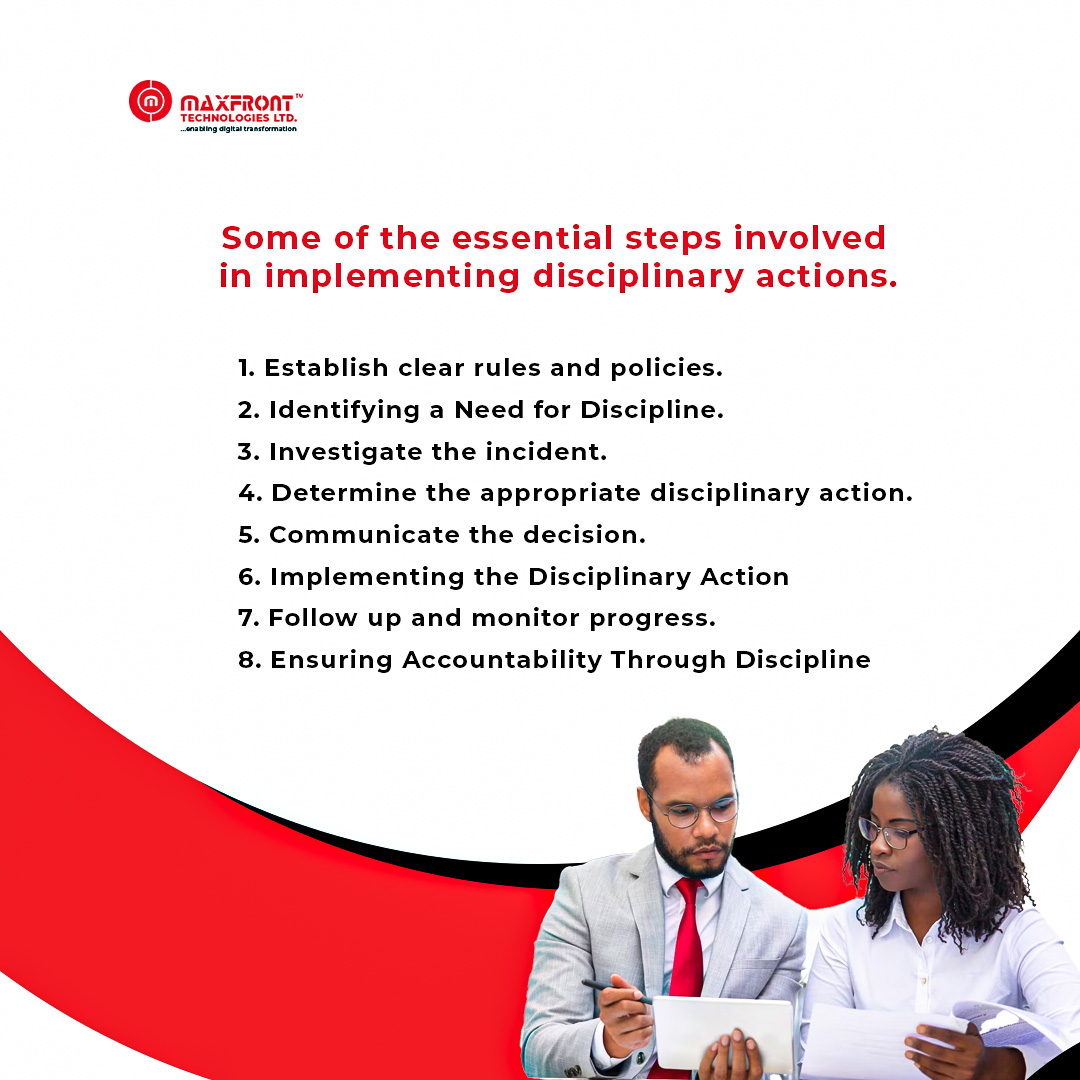The workplace can be a complex environment where different personalities, work styles, and priorities collide. As such, it’s not uncommon for employees to make mistakes or behave in unacceptable ways. When this happens, the employer needs to take appropriate disciplinary action to maintain accountability in the workplace.

Implementing disciplinary actions is a process that requires careful planning, communication, and follow-through. Corrective actions are a crucial tool that employers use to ensure accountability and maintain a safe and productive work environment. They are a set of measures taken to correct an employee’s behaviour when it does not meet the expectations set by the company. The purpose of disciplinary actions is to encourage positive behaviour, address negative behaviour, and improve employee performance. In this blog post, we will explore some of the essential steps involved in implementing disciplinary actions.

- Establish clear rules and policies.
The first step in implementing disciplinary actions is to have clear rules and policies that outline what behaviours are acceptable and what are not. These policies should be communicated to all employees, who should understand the consequences of violating them.
- Identifying a Need for Discipline
Identifying the need for disciplinary action begins with identifying misconduct. This involves clearly defining the expected behaviour, documenting instances of misconduct, and assessing the severity of the behaviour. It is essential to determine whether the behaviour is minor, moderate, or severe and what disciplinary action is appropriate.
- Investigate the incident
When an incident requires disciplinary action, the employer should investigate it to determine the facts and gather evidence. This may involve talking to witnesses, reviewing documents, or hiring an outside investigator.
- Determine the appropriate disciplinary action.
The employer should determine the appropriate disciplinary action based on the investigation findings. This may include verbal warnings, written warnings, suspension, or termination, depending on the severity of the infraction. When choosing an appropriate disciplinary action, several factors should be considered, such as the severity and frequency of the misconduct, the employee’s past performance, and the company’s disciplinary policies. The action taken should be proportional to the severity of the behaviour and comply with the company’s disciplinary procedures.
- Communicate the decision
Once the disciplinary action has been determined, it’s essential to communicate it to the employee. This should be done privately, and the employer should explain the reasons for the decision and the consequences of further violations.
- Implementing the Disciplinary Action
Implementing disciplinary action involves establishing clear expectations for the employee to follow and documenting the action. The employee should be informed of the specific behaviour that led to the disciplinary action, the consequences of continued misconduct, and the steps they need to take to improve their behaviour. The action should be followed through and documented, ensuring that the employee understands the seriousness of the situation.
- Follow up and monitor progress.
After implementing the disciplinary action, it’s important to follow up with the employee to ensure they understand the expectations going forward. The employer should also monitor their progress and provide support or additional training if necessary.
- Ensuring Accountability Through Discipline
Implementing disciplinary actions can have several benefits, including promoting accountability, maintaining a safe and productive work environment, and improving employee performance. However, disciplinary actions can also present challenges, such as creating a negative work environment and reducing employee morale. These challenges can be overcome by ensuring that disciplinary actions are taken fairly and consistently.
In conclusion, implementing disciplinary actions is an essential part of maintaining accountability in the workplace. It involves identifying the need for discipline, choosing an appropriate action, implementing it, and ensuring accountability.
Disciplinary actions can have several benefits but must be taken fairly and consistently to avoid negative consequences. It is important to remember that disciplinary actions are necessary to maintain a safe and productive work environment and to improve employee performance.
By establishing clear rules and policies, investigating incidents thoroughly, determining appropriate disciplinary action, communicating the decision, and following up, employers can create a positive work environment that fosters productivity and respect.